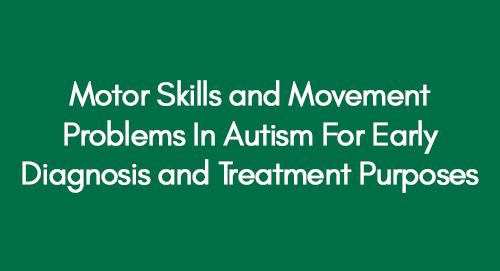
Motor Skills and Movement Problems In Autism For Early Diagnosis and Treatment Purposes
July 6, 2022
A Sociological Approach to Religion and Belief
July 6, 2022Exploring how technology changes education means finding ways to use phones and tablets for learning in college. But there are also challenges to making this happen, like figuring out how to overcome barriers to using these devices for education.
This research chapter is dedicated to the different research methods used to gather and analyse the data.
Traditional Pedagogy In Modern Educational System
This chapter encompasses the Onion Research Methodology framework, incorporating elements such as the chosen research philosophy, research approach, research design, types of investigation, data collection method, and research techniques employed. Additionally, the chapter delves into the research limitations encountered during the data assessment and evaluation process.
Research Onion
The research onion defines the steps the researcher will go through before formulating an appropriate methodology (Sahay, 2016). The research onion has various layers, with the idea that the researcher will start from the outside and peel each layer away before it hits the centre.

Research Philosophy
Selecting the appropriate research philosophy is pivotal in guiding research endeavours. Researchers often navigate different research philosophies, drawing from qualitative and quantitative research approaches, to elucidate answers to their inquiries. They employ suitable scientific methods and dissect the outcomes (Lee, 2017). Occasionally, researchers encounter an excessive demarcation between various research methodologies. Consequently, contemporary research combines these methods (Edson et al., 2016). Most research frameworks can be traced back to one of the three primary research approaches found within the research onion model: the positivist approach, the interpretative approach, or the pragmatic approach (Crossan, 2013).
In the realm of tertiary education, every research undertaking necessitates selecting one of the research paradigms to serve as the foundational framework for designing an appropriate research technique. Within this context, the interpretative approach focuses on discerning distinctions among individuals and social actors. Conversely, the positivist strategy hinges upon meticulous data collection and hypothesis development. In a complementary fashion, the pragmatic approach melds elements from both the positivist and interpretative approaches to achieve more conclusive results. In the current study within the domain of tertiary education, the researchers have opted for the pragmatism research philosophy. As previously elucidated, pragmatism philosophy amalgamates facets of both positivism and interpretivism, enabling researchers to seamlessly navigate qualitative and quantitative evidence within a singular research endeavour. Consequently, pragmatism emerges as the apt philosophy underpinning this research, facilitating the incorporation of qualitative and quantitative methodologies.
Research Approach
Within the domain of research methodology, Saunders' Research Onion model serves as a pivotal framework for elucidating the chosen research approach. There are different approaches to academic research and researchers commonly employ two primary methodologies, namely the inductive and deductive approaches. The inductive approach aligns with the qualitative research layer, utilizing structured qualitative data analysis techniques, which yield precision by relying on subjective assessments such as opinions and behaviours.
Primary Research Methods
In contrast, the deductive approach, situated in the quantitative research layer, commences with broader perspectives and progressively narrows down to specific outcomes, often following a top-down trajectory. This deductive method is essential for formulating and empirically testing assumptions, especially in cases where pre-existing data is limited. In the present study, we adhere to Saunders' Research Onion model, employing the deductive approach and primary quantitative data collection methods to systematically investigate our research inquiries, ensuring a rigorous and well-structured research process.
Research Design
Research design is the arrangement of conditions for data collection. It is the framework of different research methods and techniques that the researcher chooses for performing research. Research design fundamentally describes the type of research and has the potential to be a component that can alone be used to evaluate the worth of the findings (Diaz et al., 2019). It includes the data collection process, measurement of the data collection, and analysis performed on the data collected. The data collection process explains the data that was collected in this research (Creswell, 2017). It also describes different means of selecting the organizations for the data collection. These approaches are known as the Quantitative Research Approach, the Qualitative Research Approach, and the mixed-method approach (Tuffour, 2017).
Learn How to Write a Research Design: A Comprehensive Guide
The current research uses a mixed-method approach, using elements from qualitative and quantitative research paradigms. The Sokoine University of Agriculture (SUA) conducted the research in Tanzania. The study included teaching personnel (readers and technicians) and students. The study engaged the Faculty of Agriculture personnel, Forestry and Nature Conservation, Science, and Veterinary Medicine. Also participating were the two institutes (Development Studies Institute and Sokoine National Agricultural Library), which hosts academic programs at ASU. Since both the qualitative and quantitative aspects have been covered in the study, the selection of the mixed research design is justified.
Data Collection Method
Data collection is the process of gathering and measuring data required to perform specific research, considering the variables under discussion. In any research, there are two major types of credible data collection methods: primary and secondary. Primary data is also called first-hand data, and it is gathered by the researcher himself/herself. Information from authors/researchers is included in the secondary data. The benefit of obtaining data from primary sources is that this offers a plausible conclusion. Secondary data, on the other hand, allows the researcher to identify the research gap in the literature when the prior study is examined in great depth (Merriam and Tisdell, 2015). This study used primary data methods. In which the survey and interviews have been conducted.
Sampling Size and Sampling Technique
The research comprised a total of 142 participants. The participants comprised students and teaching faculty. Five teachers from each of the four faculties and two institutes were chosen using a simple random sampling methodology. Furthermore, a total of 40 students were randomly selected and engaged in the study. This sampling method was adopted since it provides a fair opportunity to pick each member of the population. 40 students were selected for in-depth interviews using a structured questionnaire, and assessments were used to ascertain the usefulness of mobile phones among teachers.
Research Instruments
According to Phellas and Seale (2011), it is pertinent to use an appropriate data collection instrument to be able to collect data accurately. Mobile learning, the scale of perception of mobile devices, and the scale of obstacles were used to achieve the research's aims. Both student understandings of scale and M-learning were produced and generated through literature analysis and similar research, but the perception scale consisted of 21 multiple-choice statements, each with five Likert scale choices segregated into three sections. Measurement and academic excellence (8 items), mobile communication and engagement incentives (4 items), and knowledge exposure (9 items); 18 items were positive, and 3 items were negative (No. 19, 20, and 21). see [Table 1]. The following is the survey questionnaire that has been used to facilitate the survey process.
Table 1: Students' Responses on Perceptions Scale of Mobile Devices.
| No | Items of Scale |
| First area: Academic Performance and Measurement | |
| 1 | Mobile learning can motivate students to learn. |
| 2 | Mobile learning helps students in getting immediate feedback. |
| 3 | Mobile learning leads to academic success and growth. |
| 4 | The possibility of making quizzes through the Mobile phone is high. |
| 5 | Mobile learning can be used to enhance classroom learning. |
| 6 | Mobile learning can be used to create an engaging platform for learning. |
| 7 | M-learning can aid in the continuous evaluation of the course. |
| 8 | Mobile learning will improve learning performance. |
| Second area: Mobile Communication and Interaction | |
| 9 | Mobile learning reduces location and time constraints. |
| 10 | Mobile learning facilitates the engagement and participation of alienated students. |
| 11 | Online learning allows students to interact together. |
| 12 | Mobile learning promotes lecturers-student contact and collaboration. |
| Third area: Access to information | |
| 13 | Mobile learning gives students access to the educational materials needed. |
| 14 | Mobile learning is easier than traditional learning. |
| 15 | Enjoy using a mobile device to study university courses. |
| 16 | Mobile learning saves time and effort in obtaining information. |
| 17 | Access to course information is made easier by using mobile devices |
| 18 | Mobile learning contributes to the development of research skills. |
| 19 | It will be difficult to organize a debate or an educational dialogue. |
| 20 | It's difficult to store large files on mobile phones. |
| 21 | A persistent problem with mobile batteries. |
Data Analysis Technique
For quantitative data, various statistical tools are available for the researcher to analyze both quantitative and qualitative data. Different analytical tools like Microsoft Excel, SPSS and STATA are used to analyse the quantitative data. Researchers used descriptive statistical analysis, coded and evaluated data from the research sample answers using SPSS (Statistical Packages for Social Sciences version 16 but primarily Cronbach Alpha, means, and standard deviation have been used to maintain accuracy for the range of Cronbach Alpha expectations and barrier measurements. Find mobile learning perception levels for students using scoring methods and standard deviations for perception-scale responses and identify the basic barriers to mobile learning strategies and standard barrier-scale deviation. Collected data were analyzed using thematic analysis and the Social Sciences Statistical Packages. The interviews conducted by the participants were analyzed using thematic analysis while correlation and regression were performed to determine the association between the variables and the impact of the independent variable on the dependent variable.
A Step-by-Step Guide to Dissertation Data Analysis
Research Limitations
Like all research studies, the present study has some limitations in different aspects. The demographical and geographical limitations demand that they will be limited to organizations in the researcher's approach, which are in the demographical range, considering time and resource constraints. This may imply that similar data may be collected from other entities in the future, where different conclusions may be drawn. In addition, another limitation of this research was the limited number of participants. Lastly, closed-ended or semi-structured interviews are believed to be only partly representative of the conscious thinking or opinion of the participants (Simon & Goes, 2013).
References
Bryman, A. and Bell, E., 2015. Business research methods. Oxford University Press, USA.
Creswell, J.W. and Creswell, J.D., 2017. Research design: Qualitative, quantitative, and mixed methods approaches. Sage publications
Diaz-Kope, L.M., Miller-Stevens, K. and Henley, T.J., 2019. Examining dissertation research: The relationship between gender, methodological approach, and research design. Journal of Public Affairs Education, 25(1), pp.93-114
Edson, M.C., Henning, P.B. and Sankaran, S. eds., 2016. A guide to systems research: Philosophy, processes and practice (Vol. 10). Springer
Etikan, I., Alkassim, R. and Abubakar, S., 2016. Comparison of snowball sampling and sequential sampling technique. Biometrics and Biostatistics International Journal, 3(1), p.55
Harding, J., 2018. Qualitative data analysis: From start to finish. SAGE Publications Limited.
Johnston, M.P., 2017. Secondary data analysis: A method by which the time has come. Qualitative and quantitative methods in libraries, 3(3), pp.619-626
Lee, A.S., 2017. Philosophy and method: making interpretive research interpretive. In The Routledge Companion to Management Information Systems (pp. 30-46). Routledge.
Merriam, S.B. and Tisdell, E.J., 2015. Qualitative research: A guide to design and implementation. John Wiley & Sons
Phellas, C.N., Bloch, A. and Seale, C., 2011. Structured methods: interviews, questionnaires and observation. Researching society and culture, 3
Sahay, A., 2016. Peeling Saunder's Research Onion. Research Gate, Art, pp.1-5.
Simon, M.K. and Goes, J., 2013. Assumption, limitations, delimitations, and scope of the study (Doctoral dissertation, Dissertation and scholarly research: Recipes for success).
Get 3+ Free Dissertation Topics within 24 hours?




























